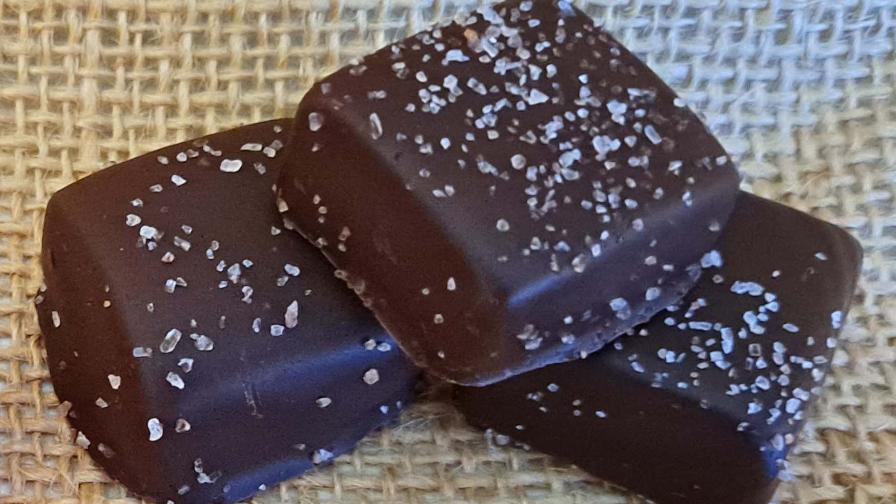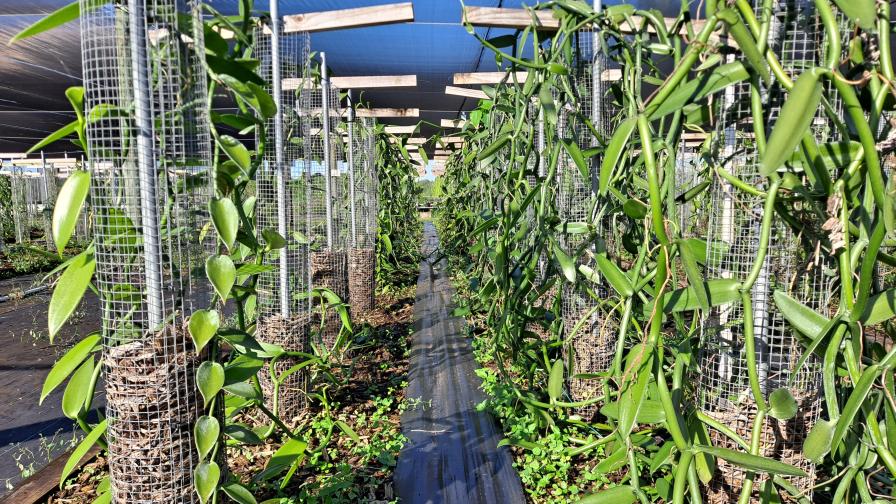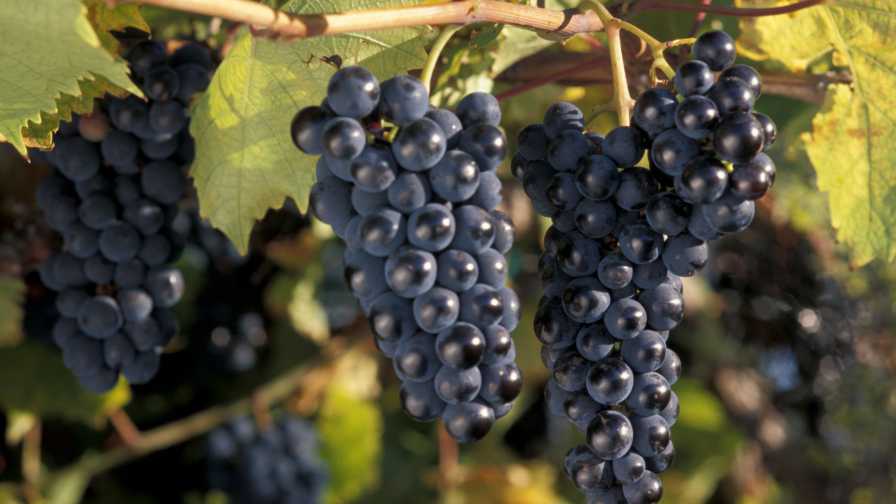How Sweet It Is: Vanilla Fresh From Florida Passes Taste Test

Vanilla fresh from Florida might become a household term sooner than you think. These specially made bon bons from Miami-based Exquisito Chocolates featured locally-grown vanilla. The taste-test experiment was a hit with consumers. The success could mean a new niche crop for interested growers.
Photo courtesy of UF/IFAS
Some foods are an acquired taste. Others not so much. There is something almost magical about how well chocolate and vanilla go together. Mix in that the vanilla is locally grown, and you take the culinary experience to another level. That was the goal behind a recent taste test cooked up by a University of Florida scientist and a Miami chocolatier.
UF/IFAS Tropical Plant Geneticist Alan Chambers wanted to mix chocolate and vanilla as he works on the next steps in his vanilla research. To do so, he sought to work with a local business. He test-marketed a choice vanilla bean grown in a shadehouse at the UF/IFAS Tropical Research and Education Center in Homestead. His search led him to Carolina Quijano of Exquisito Chocolates, a Miami chocolatier who founded the city’s first chocolate factory.
For the experiment, Chambers supplied Florida-grown vanilla extract and vanilla beans. Quijano went to work and crafted a variety of bon bons with successful results. The chocolates were created into four bite-sized products and packaged as part of the Mother’s Day collection. The collection explained how the chocolate featured a locally-grown vanilla bean as its foundation. The batch sold out before the holiday arrived.
For Chambers, this marks a research milestone to determine if Florida-grown vanilla is a viable crop that will meet commercial and consumer needs and appeal.
“The experiment was a success and a win-win in our next steps to identify a viable South Florida crop for commercial and home growers,” Chambers says. “Being able to use a cultivar with desirable traits that is virus-free and has a higher vanillin content than the worldwide average, makes this a desirable crop for South Florida.”
Chambers has been studying the viability of growing vanilla in South Florida as part of the UF/IFAS breeding program since 2015. He and his team have been identifying, collecting, breeding, and testing more than 300 vanilla cultivars — all to find the one cultivar with the traits that will sustain a viable Florida-grown vanilla industry.
As a spice, vanilla is the second most expensive and is one of the world’s most popular flavors. Madagascar supplies more than 80% of the world’s vanilla, followed by Indonesia and Mexico. The U.S. is the biggest importer of vanilla beans from Madagascar.
Late last year, Chambers’ work developed a tool to unlock genetic traits that could pinpoint the vanilla variety that produces an abundance of beans, grows efficiently and sustainably, with consumer-approved taste.

The vanillin content in the vanilla cultivar grown in a shadeshouse at the Tropical Research Center in Homestead, FL, is 3.5%, which exceeds the industry standard of 2%, according to Alan Chambers.
Photo courtesy of UF/IFAS
Among the main findings, Chambers explained that while all commercial vanilla plants are vulnerable to a fungal pathogen, related species such as Vanilla pompona are resistant and could provide a genetic route to a disease-resistant Vanilla planifolia.
“We selected the best vanilla plant out of the entire collection,” Chambers adds. “We know it grows well in Florida, it yields extra-long gourmet beans, and it is free from virus.”
For growers interested in growing vanilla in Florida, check out the growing guide “Vanilla Cultivation in Southern Florida.”








